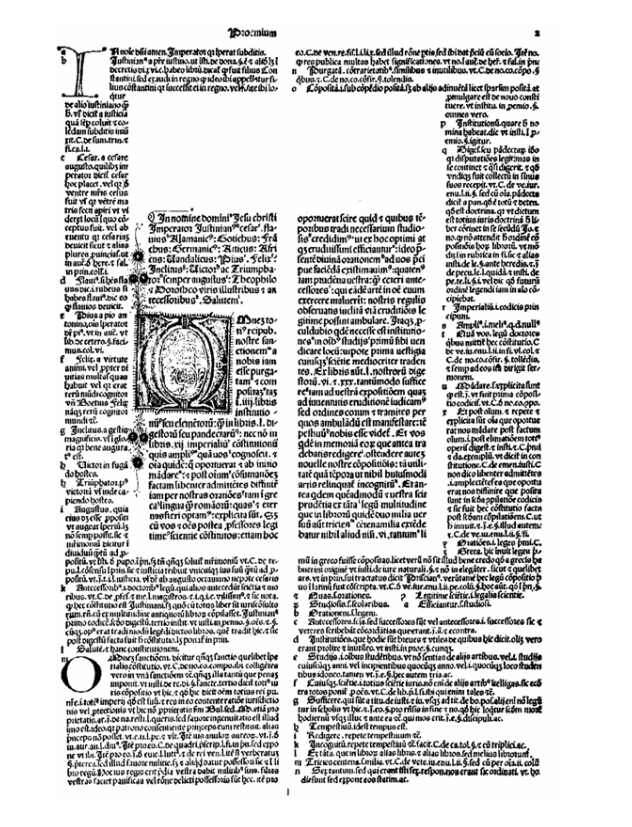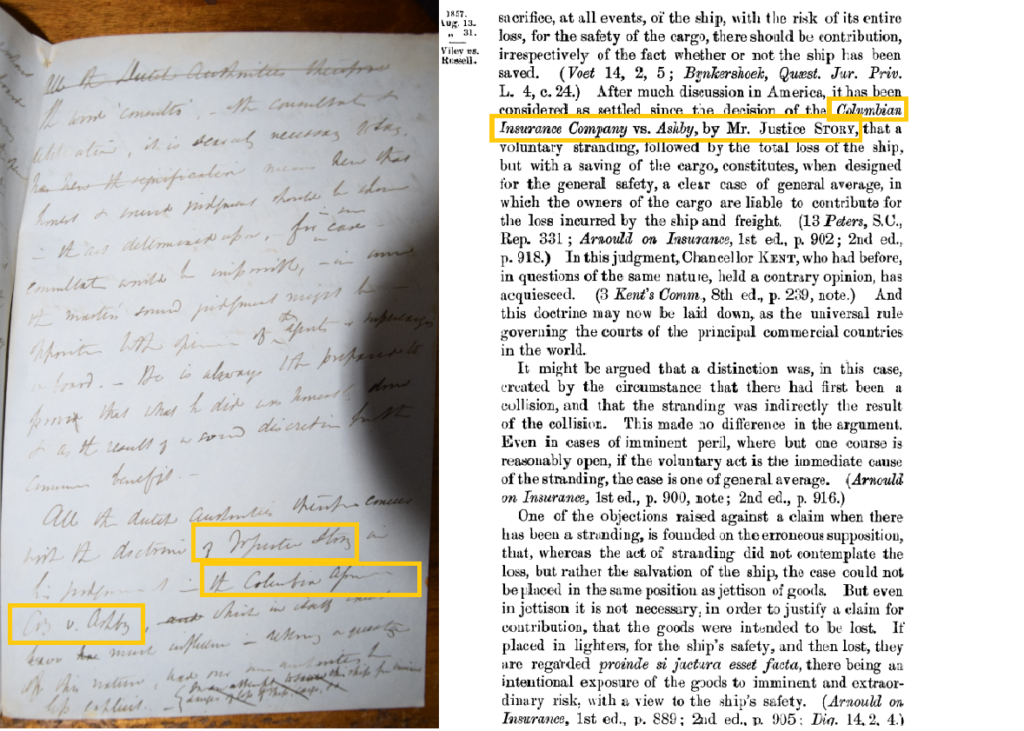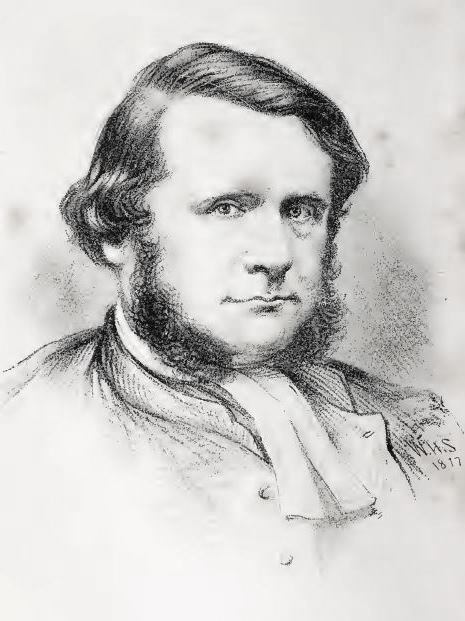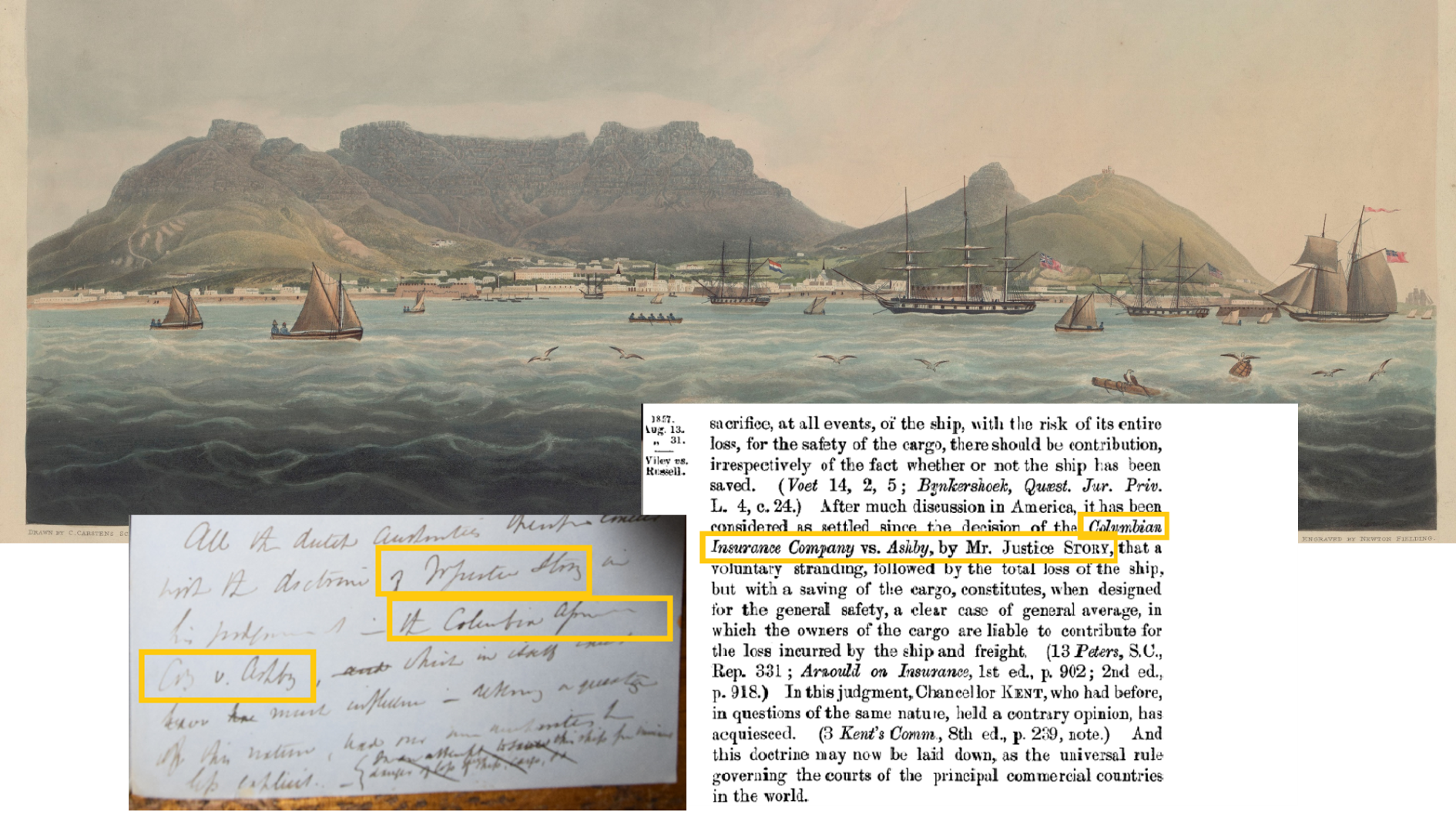The medium is also the message

Is there something lost and something gained when you read on a computer screen or tablet as opposed to a printed book? Does reading Tolkien, Brontë, Atwood, or Hesse seem different when looking at an eBook, as opposed to holding the paperback in hand? Recently, a focus on materiality in legal history has concentrated on making the often taken-for-granted media – usually considered as the vessel which simply stores the texts we read – more visible. The materiality approach aims to understand how this vessel – whether it be the book, the file, piles of bureaucratic paperwork, but also things like format or organisational and referencing tools (the table of contents, indices, or citations, for example), as well as whether the text is handwritten, printed, or digital – contributes to the meaning of the text or even produces its own specific meanings and prompts for action.
Indeed, reading about Harry Potter in a printed book is different from reading about him in electronic form. His friends have not changed, he still takes the Hogwarts Express to school, and he will forever embark upon the same adventures throughout the fantasy series, no matter how many times and in however many formats one may read about him. The plot, the characters, the themes of good and evil – the content – will not change from book to eBook or vice versa, but, as a physical artefact the book has its own features of meaning-making, just like other forms.
Why should these features matter for legal historians?
Texts are, at least for legal history more traditionally, still our main sources in accessing the past. The point is not to disregard the content in favour of form, but to shake the ontological assumptions that we have about those texts, namely, that their meaning is fully comprehended because we can read and understand their content. In the field of law, a significant consequence of ignoring these material features is that the law is considered as “immaterial, a floating discourse uncompromised by material reality” (Johnson, p. 505). However, the fact that legal books can move across seas and lands, or are pocket-sized, or include easy referencing tools for quick consultation, for example, are features essential to the development and globalisation of the law (see generally Duve/Danwerth). Or, remembering that legal books are snapshots of historical processes of intertextuality, their format as “epitomisations” of original works, for example, involves omissions, condensations and abstractions of the source text’s content (see Meyer in Duve/Danwerth). Indeed, it is the complex formation of people and institutions, communities and practices, communication networks over time, books and files as material things, as well as the words those books and files communicate, that make up the law.
More precisely formulated, and following Thomas Duve in understanding legal history as the history of translation of knowledge of normativity, legal historians can observe our object of study as “more or less stabilised historical arrangements of discourses, practices, rules, norms and principles, and their contingent conditions that are relevant to the construction, mediation, and enforcement of generalisable expectations in relation to a particular field of action” (Historical Regimes of Normativity blog post; see also Duve 2022a and 2022b). This constructivist approach to law does not mean that we now doubt the reification of the written word in law, but, in the words of Antonio Manuel Hespanha, we can also consider “the idea that these things we call books, along with their physical properties, have effects on thought.” (Hespanha, p. 14).

What do we mean by materiality?
It is important to be clear about what I mean when I state that form has effects on thought. I am not saying, for example, that the “medium is the message” (McLuhan, my emphasis). In other words, I do not go so far as to say that the form or media ultimately dictates the meaning – and the content is neither here nor there. Rather, I take a more cautious approach in defining materiality in the context of my research. Roughly put: the form allows for certain (legal historical) developments, certain understandings (of content), and prompts certain actions.
For example, the computer screen allows for a more superficial (that is, less emotive or comprehensive) and speedier reading which entails the possibility of a much greater consumption of information, whereas a printed book, which involves the physical act of turning a page, and thus also better sensorimotor cues (including how many pages are left still to read), allows for a slower and deeper level of comprehension. This has been studied in neuroscience, but it is perhaps something we all know intuitively: generally, you have a better memory of where a word or sentence was written, whether it was towards the top or rather the bottom of the page, located likely at the beginning, somewhere in the middle or towards the end of a printed book, than you have when trying to recall its location on a screen. The pages on a screen do not afford this spatial memory in the same way because web pages continue without break. Your mouse scrolls and scrolls until you reach the end of the text or the end of your attention – sometimes because another notification has popped up to divert you! (With a book, your attention is often diverted because of external reasons, that is, reasons that originate from something other than the media itself, like the doorbell ringing). The question, “How many words on a standard page?” is almost nonsensical if we are talking about the pages of the web. The idiom, “she turned the page”, meaning to move on from an event, connotes the physical, material features of printed or manuscript media. In other words, what we communicate is inextricably linked to our instruments of communication. And this insight can be useful for legal history.
Materiality in legal history: the handwritten notes of E. B. Watermeyer, Judge of the Cape Supreme Court
Part of my research considers the differences between manuscript records and their printed counterparts in the decided judgments of the Supreme Court of the Cape of Good Hope, beginning in the late 1820s. I have the fortune of being able to directly compare the handwritten notes of one of the judges, E. B. Watermeyer, who sat at the court from 1857 to 1867, with their printed versions recorded in a number of different publications. The manuscript notes consist of 18 cases, ranging from 1850 to 1866, some only partial due to missing pages, but most of which were later reported in print.

What is clear from these sources is that, where there is a one-to-one comparison possible between the handwritten notes and the printed version, the content, including the logic of the legal argument, is identical (bar a few stylistic differences). Of course, there are differences in form where, for example, fewer commas are necessary in the manuscript version because a pause is naturally made by the edge of the page and beginning of a new line. Where italics are used in print, these phrases are underlined or placed in inverted commas in the manuscript. Whether these kinds of punctuational differences have a meaningful effect on legal thought is doubtful. What is significant is the fact that, in the manuscript records, references to legal statutes, Roman-Dutch authorities, or other legal cases often do not include citations or page references, and when they do, they are sometimes incorrect. In these instances, one is much more dependent on the surrounding text and local knowledge were one to want to consult those references first hand. In print, citations are everywhere. Every case, Roman-Dutch writer or statute that is mentioned contains detailed information about when and where they can be sourced: the book title or volume, the page or paragraph reference, etc. What this enables is a much more efficient way of finding and consulting these legal authorities, which is part of the lawyer’s daily practice.

Why did Watermeyer not take the time to include these details, or at least to ensure that they were correct, when writing his notes? It is not necessarily the case that the notes were only meant for his own personal record-keeping; there is evidence that the manuscript notes of the judges were shared and consulted amongst each other. Or, to turn the question around, why did the editors of the printed books, many of which came out at a much later date – some even 30 years after the case was heard – care about these details? And, if we take materiality as our interrogation point, what were the effects of this difference in form?
While the judges’ manuscript notes were indeed referred to by the bench, often for the purpose of confirming what had been previously decided by the court, the printed books were reference works par excellence. No doubt the accessibility of the printed books and their widened readership made them a successful enterprise per se, but the inclusion of citations cannot be disregarded as a major factor contributing to their consumption. The accurate and greater inclusion of these citations in the printed books meant that a practicing lawyer could – 30 or 40, or even 100 years later – still consult the sources mentioned in the decisions without relying on the local knowledge of the judges and lawyers at the time. With the inclusion of these details, the past is brought into the present and made capable of continuous practical use by the contemporary lawyer.
The doctrine is in the detail
To repeat, it is not that form or media dictates all meaning and prompts for action; it is not that without print there would have been no concern for the inclusion of accurate citations. Citations were possible and indeed evident in manuscript form. Considering materiality is considering its contribution and interconnection with the emergence of law and can be examined on many layers: in my example, the manuscript form allowed for citations, but with print their inclusion – as a form within a form (citations within manuscript versus citations within print) – was different and had related differing consequences in their effect. The comparison of the two media has brought to light this otherwise taken-for-granted detail, namely, the fact of the inclusion or lack thereof of accurate citations to legal authority in case records.
Considering materiality in this context allows us to observe two further things. Firstly, the establishment of legal doctrines of all kinds stemming from the decisions of judges in court require repetition over time and a certain abstraction from the specificities of local contexts. The printed publication of these decisions, their multiplication and broader consumption, was an important element in this transformation process from particular practices to general legal doctrines. We can see how, beyond the citations within the books, the books themselves were the material means for a source of law in the Cape of Good Hope: case law.

Secondly, as a kind of meta observation, we can see how the practice of relying on past decisions developed into the corresponding legal doctrine that the courts ought to follow past decisions: the doctrine of precedent. On one hand, because a lawyer could rely on the citations and other finding devices in the printed books to show that the Cape Supreme Court already decided a similar case on the grounds for which he was at present advocating, the accuracy and accessibility of these citations were important for the application of precedent. The form (citations) prompted the practice (reference and reliance on past case decisions).
On the other hand, the practice made the production of printed material necessary: there had to be a way to refer to past decisions beyond just the memories or scribbled notes of the judges and lawyers sitting in court at the time. And again, this printed material was an important element for individual decisions to transform from a practice into a legal doctrine (as with the emergence of all legal doctrines). Materiality makes us aware of how historical regimes of normativity partake in a “continual reflexive process, through looping or feedback” (Glenn; see also Duve 2022a, p. 4). The form (printed books) played a significant role in a specific legal historical development (the emergence of the doctrine of precedent). Thus, while as a practice, it can be traced back at least 30 years before the first printed book on cases was published (in 1857), its emergence as a legal doctrine can only be fully understood by considering its materialisation in these printed books.
Finally, materiality would also prompt us to ask, how did the form contribute to the specific understanding or definition of the doctrine of precedent as it emerged in the Cape of Good Hope? A question that brings us back to Hespanha and “the idea that these things we call books, along with their physical properties, have effects on thought.”
Materiality as another vessel for understanding law
In the end, we could consider the expression “true to form” and see how it takes on a special understanding for legal history, and for us as readers more generally. Apart from connoting some expected behaviour or consequences (which can be studied), the form or the media also entails certain opportunities, as well as losses, and these effects are to be taken seriously if we wish to better understand changes of the law through time. More than just vessels for legal content, the material characteristics of law (and of life) show us how to appreciate the things we take for granted and contribute to a more complete knowledge of our object of study, a more examined life.
References
Duve, Thomas (2020), Pragmatic Normative Literature and the Production of Normative Knowledge in the Early Modern Empires (16th-17th Centuries), in T. Duve, O. Danwerth (eds.), Knowledge of the Pragmatici. Legal and Moral Theological Literature and the Formation of Early Modern Ibero-America, Max Planck Studies in Global Legal History of the Iberian Worlds, Leiden-Boston, Brill, 2020, pp. 1-39.
Duve, Thomas (2022a), Legal History as a History of the Translation of Knowledge of Normativity, mpilhlt Research Paper Series No. 2022-16.
Duve, Thomas (2022b), Legal History as an Observation of Historical Regimes of Normativity, mpilhlt, Research Paper Series No. 2022-17.
Glenn, H. Patrick (2005), Doin’ the Transsystemic: Legal Systems and Legal Traditions, in: McGill Law Journal 50:4, 863-898, p. 874.
Hespanha, Antonio Manuel (2008), Form and content in early modern legal books. Bridging the gap between material bibliography and the history of legal thought, Rechtsgeschichte 12 (2008), pp. 12-50.
Johnson, Tom (2018), Legal History and The Material Turn, in M. D. Dubber and C. Tomlins (eds.), The Oxford Handbook of Legal History, Oxford, Oxford University Press.
McLuhan, Marshall (1964), Understanding Media: The Extensions of Man (1st ed.). New York: McGraw Hill.
Meyer, Christoph H. F. (2020), Putting Roman and Canon Law in a Nutshell: Developments in the Epitomisation of Legal Texts between Late Antiquity and the Early Modern Period. In T. Duve, & O. Danwerth (Eds.), Knowledge of the Pragmatici: Legal and Moral Theological Literature and the Formation of Early Modern Ibero-America (pp. 40-88). Leiden; Boston: Brill Nijhoff.
Cite as: Wielandt, Alexandra: Why is materiality useful for legal historians? More than just a vessel for legal content, legalhistoryinsights.com, 27.09.2024, https://doi.org/10.17176/20241001-170802-0



 This work is licensed under a
This work is licensed under a 